In the heart of the West Virginia's Yew Mountains rests the largest Forest Service wilderness area in the eastern United States, Cranberry Wilderness. The more than 47,000 acre wilderness and designated black bear sanctuary features a beautiful and rugged landscape. Its mountains and valleys are filled with dense Appalachian hardwoods, thick rhododendron groves, and towering stands of red spruce. Its high plateaus are blanketed in sphagnum moss, drawing striking similarities to the primeval tempered rainforests of the Pacific Northwest. Flowing through Cranberry Wilderness is its namesake river, a tributary of the Gauley River, whose pristine water holds more trout per acre than any other stream in the state. This lush wilderness, located wholly within Monongahela National Forest, features more than sixty miles of unmaintained trails; there are no bridges over its streams, no blazes on its trees, and zero cell service. True wilderness. Scattered along its trails under canopies of hardwoods are some of the finest backcountry campsites in the state, ready to reward those who call the Cranberry home for the night. Although the North South Loop may lack expansive ridgeline views or towering waterfalls, it more than makes up for it with abundant solitude. Along this route, hikers are far more likely to cross paths with a black bear than with another person.
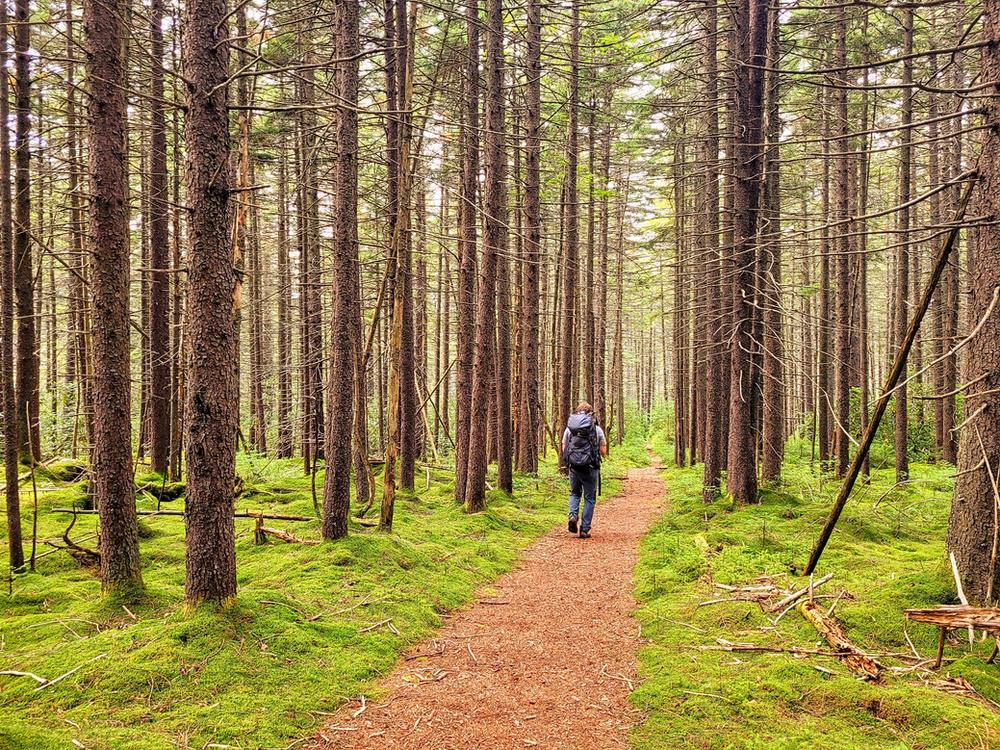

Trailhead elevation 4,492'
Water Along the MIddle Fork Trail, unreliable elsewhere
Don't miss The riverfront campsites along the Middle Fork Trail, especially at the Laurelly Branch junction
Backpacking the South Fork/Middle Fork Loop
Hikers will find two parking areas near the trailhead, one at the trailhead that can accommodate two vehicles and another directly across the road that can hold four to five vehicles. On the rare occasion that these are filled, parking is permitted along WV-150/Highland Scenic Highway. These parking areas are within 5 minutes to Big Beechy Trailhead, which can be used to access the 1995 N28901 plane crash site. The trailhead for the North Fork/Middle Fork Loop is clearly marked on the west side of WV-150/Highland Scenic Highway with the sign below.
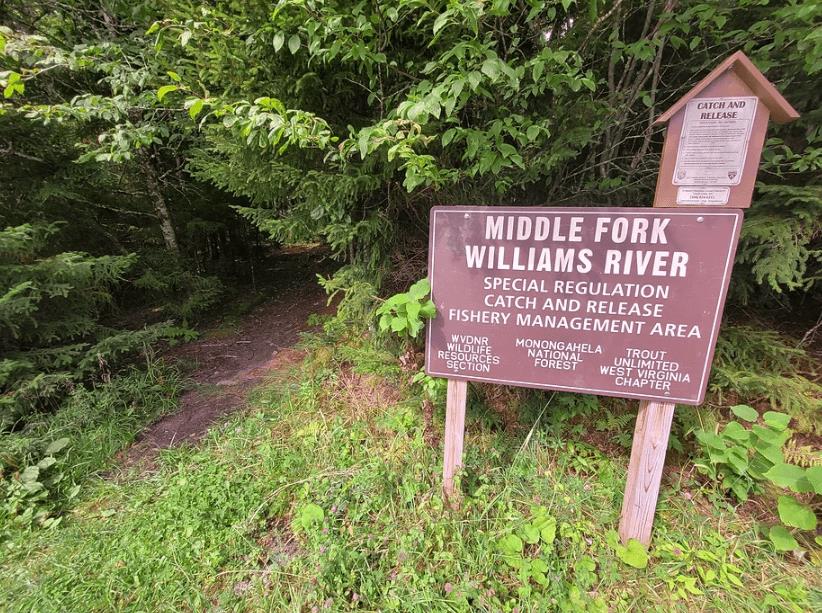
After entering the forest, hikers will find a number of trails going in various directions, but stay left and within a few hundred feet they will find a large map kiosk near the start of the South Fork Trail. Heading clockwise, the first 3.5 miles along the South Fork Trail feature plateaus covered in moss as far as the eye can see, thick rhododendron groves, red spruce, and a fair amount of overgrowth.

It's worth noting that mud is prevalent throughout the South Fork Trail, ranging from around a quarter inch to ankle deep in spots throughout the year.

At roughly 5.5 miles, the South Fork Trail intersects with the clearly marked Tumbling Rock/North-South Trail junction where hikers should turn right and proceed up a steady incline.
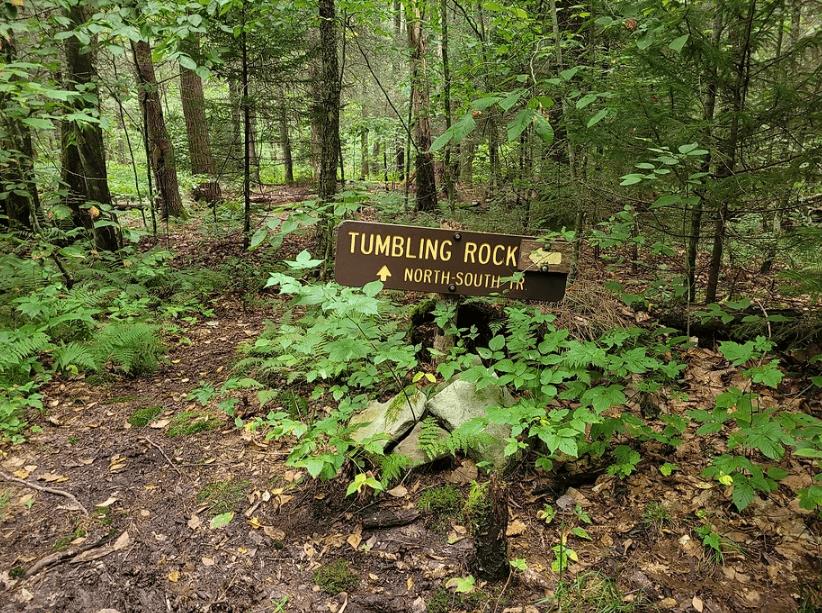
At 6.4 miles, the trail becomes fairly challenging to follow due to overgrowth. Having a downloaded map can be of great help in this area. AllTrails users should have the North-South Loop Trail downloaded (it's mistitled). Rock cairns are present to help hikers locate the trail, but even with them it's challenging. Around 8 miles hikers will reach a signed junction with the Laurelly Branch Trail.
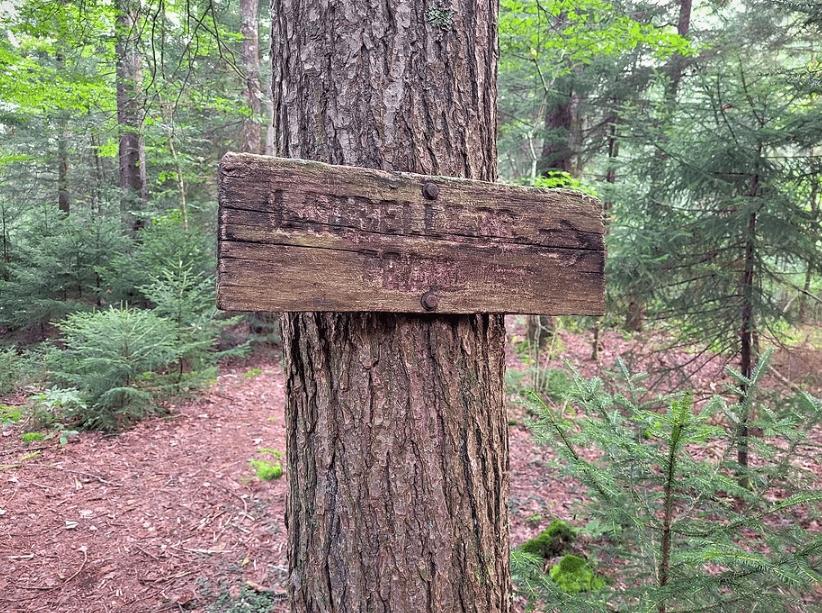
From this point, the route proceeds along the Laurelly Branch Trail for 3.5 miles, losing nearly 1,000 feet of elevation, before reaching the Williams River North Fork, the only reliable water source thus far.
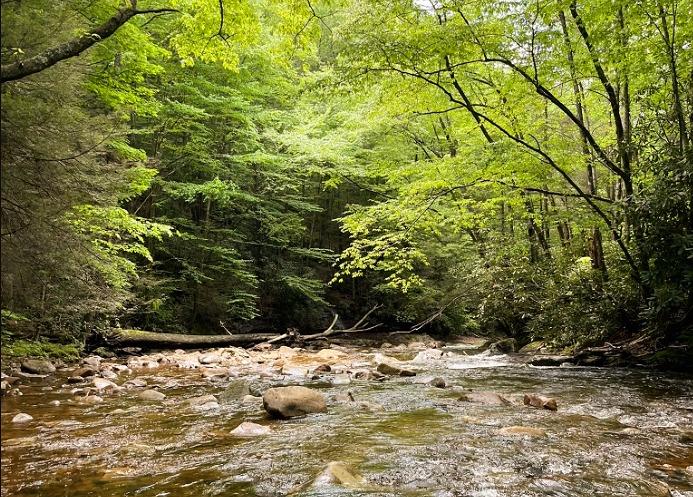
On the near side of the river, at approximately 11.6 miles, there is a great group-sized campsite with a stone fire ring. Crossing the river, which ranges from up to waist deep water in the spring and after sustained heavy rainfall to minor rock hopping in the summer months and after extended dry spells, leads to another campsite resting along the far bank. The campsite located on the far side of the river, pictured below, can accommodate one to two tents, but does not have a fire ring.
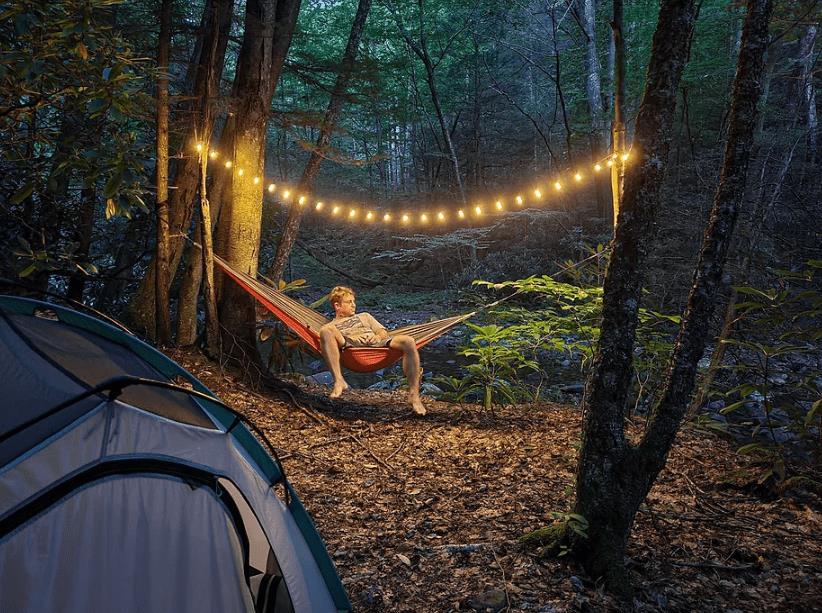
From the river, the Middle Fork Trail advances along a very gradual, generally mud free incline. Sights and sounds of the river and its many small cascades are present for the following six miles or so. The landscape resembles that of the Laurelly Branch Trail - mixed hardwoods with the occasional rhododendron grove. Also along the Middle Fork Trail, hikers will encounter three river crossings. The first two are near miles 13.3 and 14.1, and range from knee deep in the spring and after sustained rainfall to minor rock hopping in the summer and after extended dry spells. The photo below was taken in mid-July after more than a week without rain.
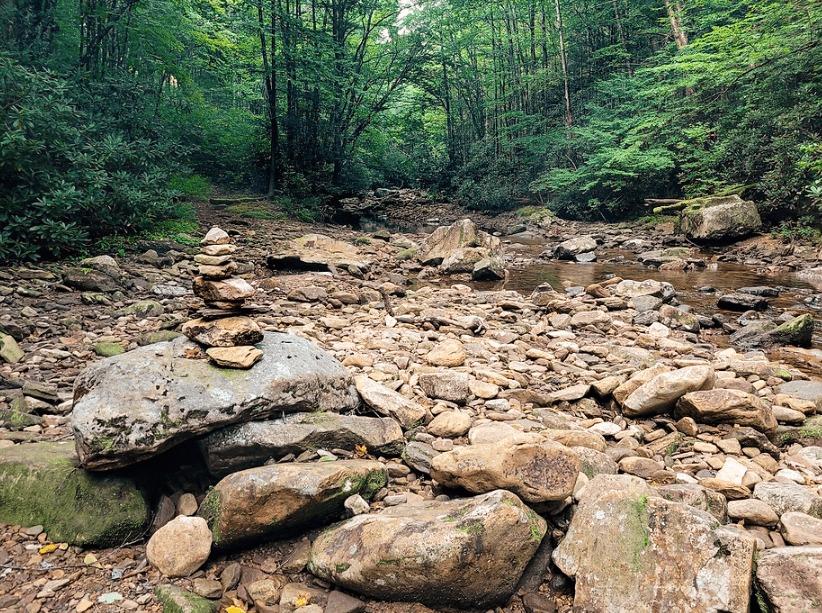
The third crossing comes around the 14.9-mile mark and depending on the season, ranges from minor rock hopping to calf deep water.

Along the Middle Fork Trail, hikers will also encounter numerous blowdowns, which range from 2 to 3 inch trees to those that require a little more work. At roughly 17.5 miles, the landscape begins to change. Moss, ferns, and spruce become more prominent as the sound of the river gently fades away.
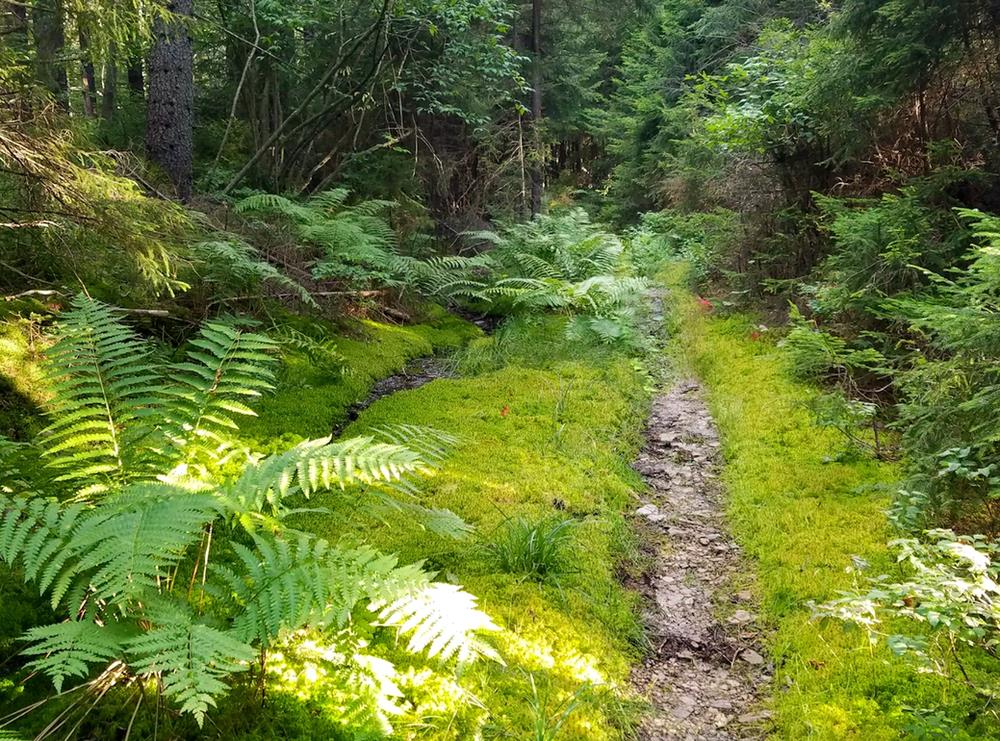
Around 18 miles, hikers will reach the clearly marked North Fork Trail and make a sharp right. The remainder of the trail is covered in a thick layer of spruce needles, welcoming relief for sore feet. At roughly 19.5 miles, the trail becomes surrounded with thick rhododendron, serving as an indication that the route is nearing its conclusion.
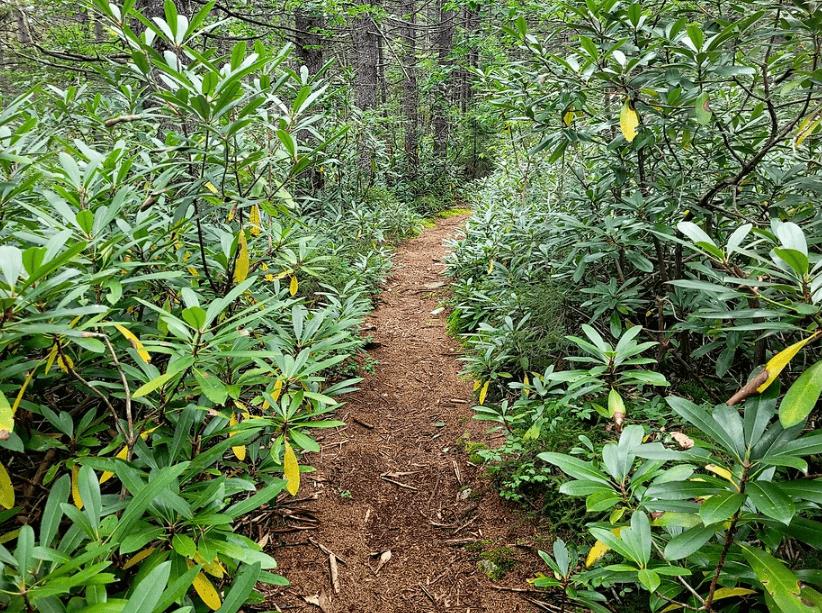
A short distance later, the trail intersects with the North/South Trail, where hikers should turn left to return to the trailhead.
Campsites
I encountered the following established campsites along the route, all of which had either an established stone fire ring or fire pit. Mileage is approximate and listed from the start of the route, hiking clockwise.
1.8 on the left (medium site)
2.0 on the left (medium site)
2.5 on the left and right
2.9 on the left (large site)
3.3 on the left (large site)
4.3 on the right (medium site)
4.7 on the right (large site)
5.1 on the right (medium site)
5.5 at Tumbling Rock/North-South Trail junction (large site)
6.5 on the right (small site)
11.6 on river (large site and small site)
12.0 on the right (medium site)
12.1 on the opposite side of the river (medium site)
13.2 on the right (large site)
14.6 on the right (medium site)
14.7 on the right (medium site)
16.2 on the right (medium site)
https://www.greatamericanhikes.com/post/backpack-the-cranberry-wilderness-north-south-loop
 CampingSurvivalistHuntingFishingExploringHikingPrivacy PolicyTerms And Conditions
CampingSurvivalistHuntingFishingExploringHikingPrivacy PolicyTerms And Conditions
